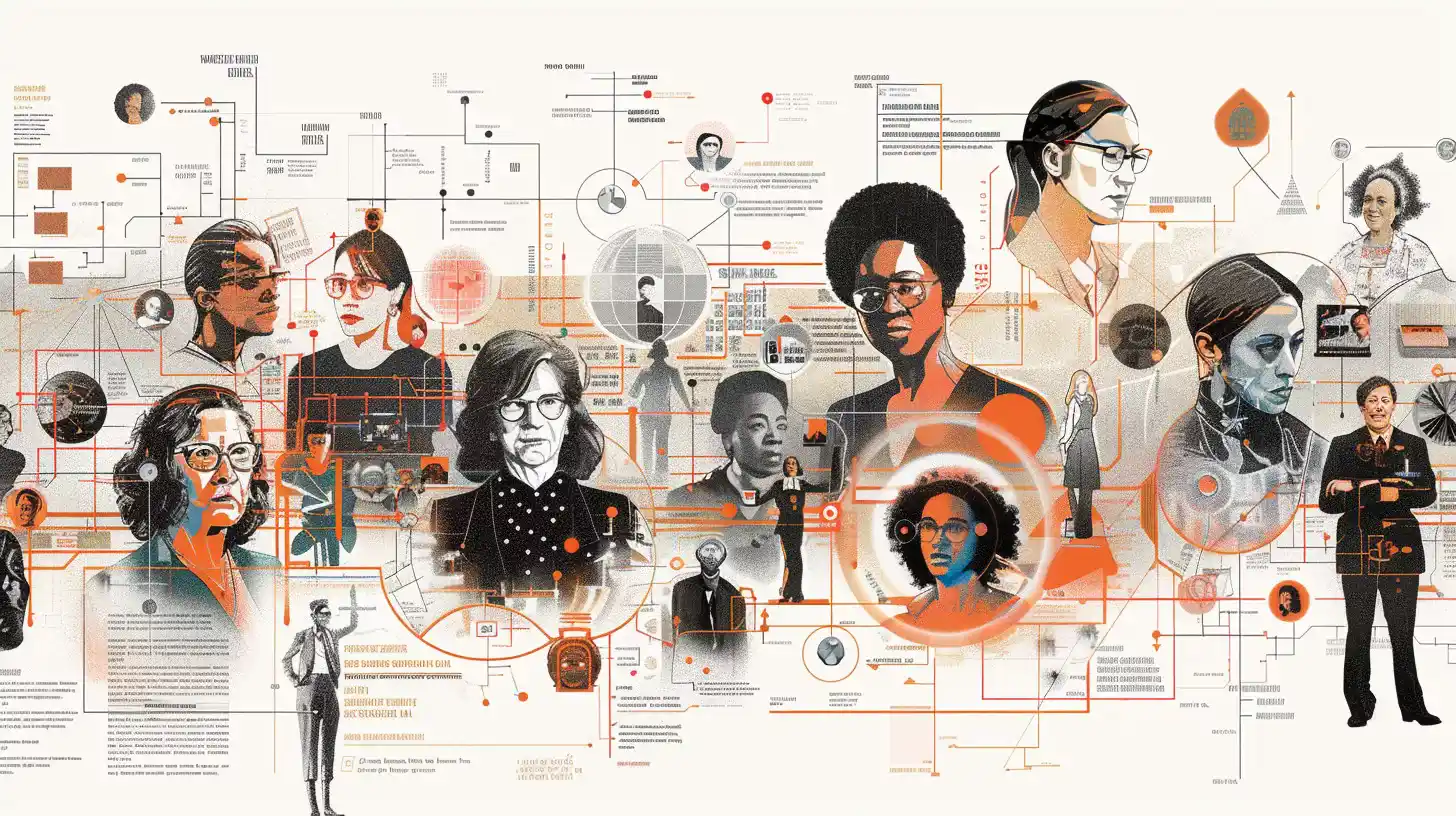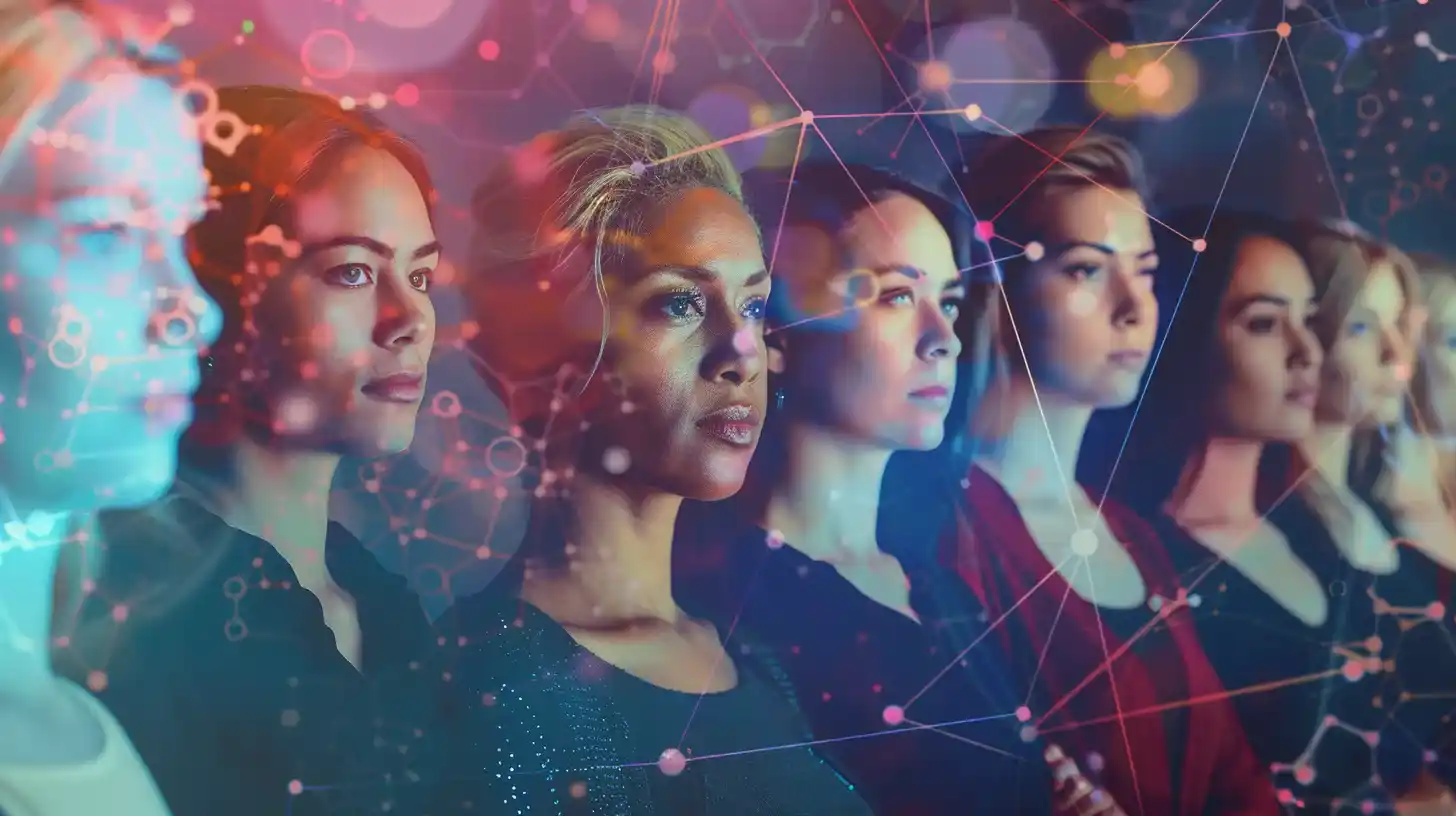Table of Contents
Women in AI have played a crucial role in advancing the field of artificial intelligence, from creating textbooks and algorithms to developing social robots and ethical frameworks. Yet, their achievements are often overshadowed by the media attention given to male tech leaders and entrepreneurs. In this article, we will explore the history, challenges, and opportunities for women in AI.
How women shaped the AI field
Contrary to popular belief, the Women in AI boom did not start with a few men in Silicon Valley. It was the result of decades of research and innovation by academics, regulators, ethicists, and hobbyists, many of whom were women.
For instance, Elaine Rich, a retired computer scientist from the University of Texas at Austin, wrote one of the first textbooks on AI in 1983 and later led a corporate AI lab in 1988. Cynthia Dwork, a Harvard professor, pioneered the fields of AI fairness, differential privacy, and distributed computing.

Cynthia Breazeal, a roboticist and professor at MIT, co-founded Jibo, a robotics startup, and created Kismet, one of the earliest “social robots”, in the late 1990s and early 2000s.
These are just a few examples of the remarkable women who have contributed to the AI revolution. To give them their well-deserved and overdue time in the spotlight, TechCrunch is launching a series of interviews focusing on women in AI. We will publish several pieces throughout the year as the AI boom continues, highlighting key work that often goes unrecognized. Read more profiles here.
If you know a woman in AI who should be on the list, please email us and we will seek to add them.
The gender gap in AI
Despite the many ways in which women have advanced AI tech, they make up a tiny sliver of the global AI workforce. According to a 2021 Stanford study, only 16% of tenure-track faculty focused on AI are women. A separate study by the World Economic Forum found that women hold only 26% of analytics-related and AI positions.
What’s worse, the gender gap in AI is widening, not narrowing. Nesta, the U.K.’s innovation agency for social good, conducted a 2019 analysis that showed that the proportion of AI academic papers co-authored by at least one woman had not improved since the 1990s. As of 2019, only 13.8% of the AI research papers on Arxiv.org, a repository for preprint scientific papers, were authored or co-authored by women, with the numbers steadily decreasing over the preceding decade.
The reasons and consequences of the disparity
The reasons for the disparity are complex and multifaceted. However, a Deloitte survey of women in AI revealed some of the common barriers and challenges they face, such as judgment from male peers, discrimination based on gender stereotypes, lack of mentorship and support, and unequal pay and career opportunities.
It starts in college: 78% of women who responded to the Deloitte survey said they did not have a chance to intern in AI or machine learning while they were undergraduates. Over half (58%) said they left at least one employer because of how men and women were treated differently, while 73% considered leaving the tech industry altogether due to the unfairness and bias they experienced.
The lack of women is not only a matter of justice and equality but also a matter of quality and innovation. Nesta’s analysis found that women are more likely than men to consider societal, ethical, and political implications in their work on AI, which is crucial for developing responsible and beneficial AI systems.
Moreover, having more diverse and inclusive teams can lead to more creative and effective solutions, as they can draw from a wider range of perspectives and experiences.

The way forward for women in AI
There is no easy fix for the gender gap in AI, but there are some steps that can be taken to improve the situation. The women we profile in our series share many suggestions for those who wish to grow and evolve the AI field for the better. But a common thread runs throughout strong mentorship, commitment, and leading by example.
Organizations can affect change by enacting policies that elevate women already in, or looking to break into, the AI industry. These policies can include hiring and promoting more women, providing training and education opportunities, creating mentorship and networking programs, and fostering a culture of diversity and inclusion.
Decision-makers in positions of power can also wield that power to push for more supportive and equitable workplaces for women.
Individuals can also make a difference by supporting and encouraging women in AI, whether they are colleagues, friends, family, or role models. They can also raise awareness and challenge the stereotypes and biases that exist in the media and society. And they can also inspire and empower the next generation of women in AI, by sharing their stories and showing them the possibilities and opportunities that await them.
Women in AI have made a tremendous impact on the field, but they are often overlooked and underrepresented. It is time to change that and to celebrate and support their work. Join us in our series of interviews, and learn more about the unsung heroes of the AI revolution.